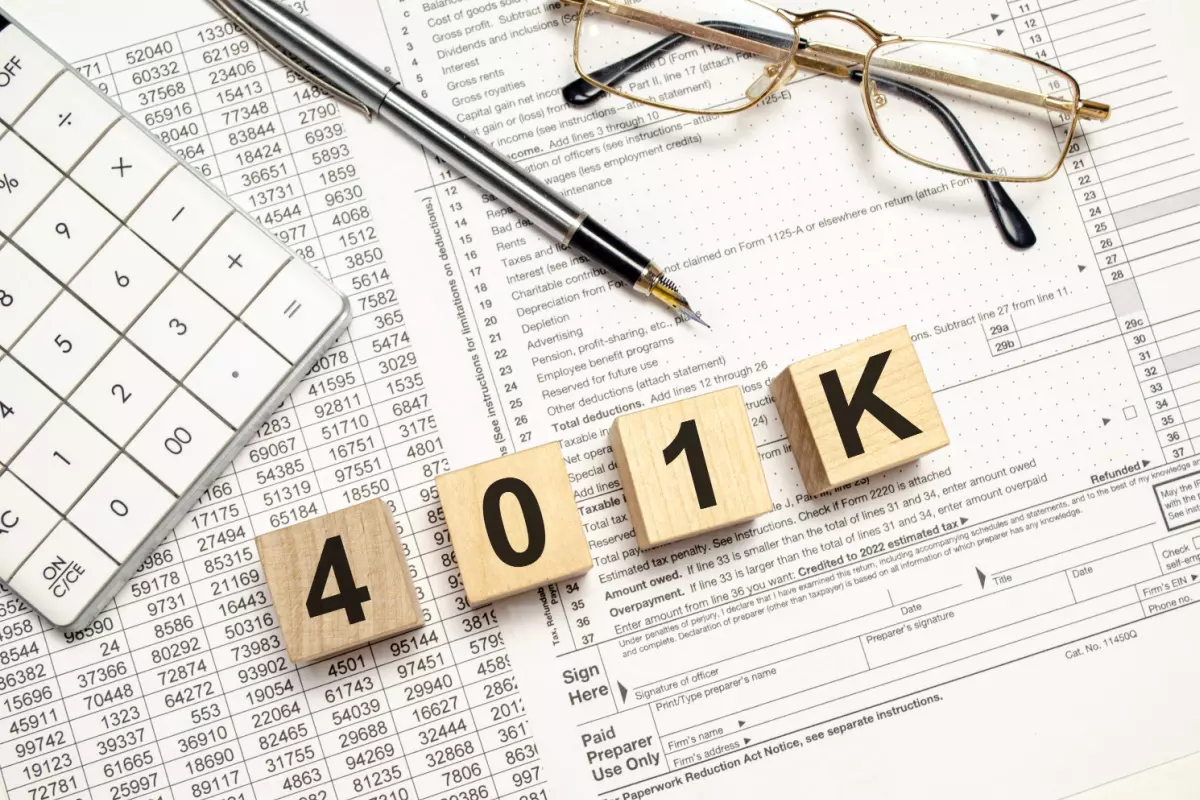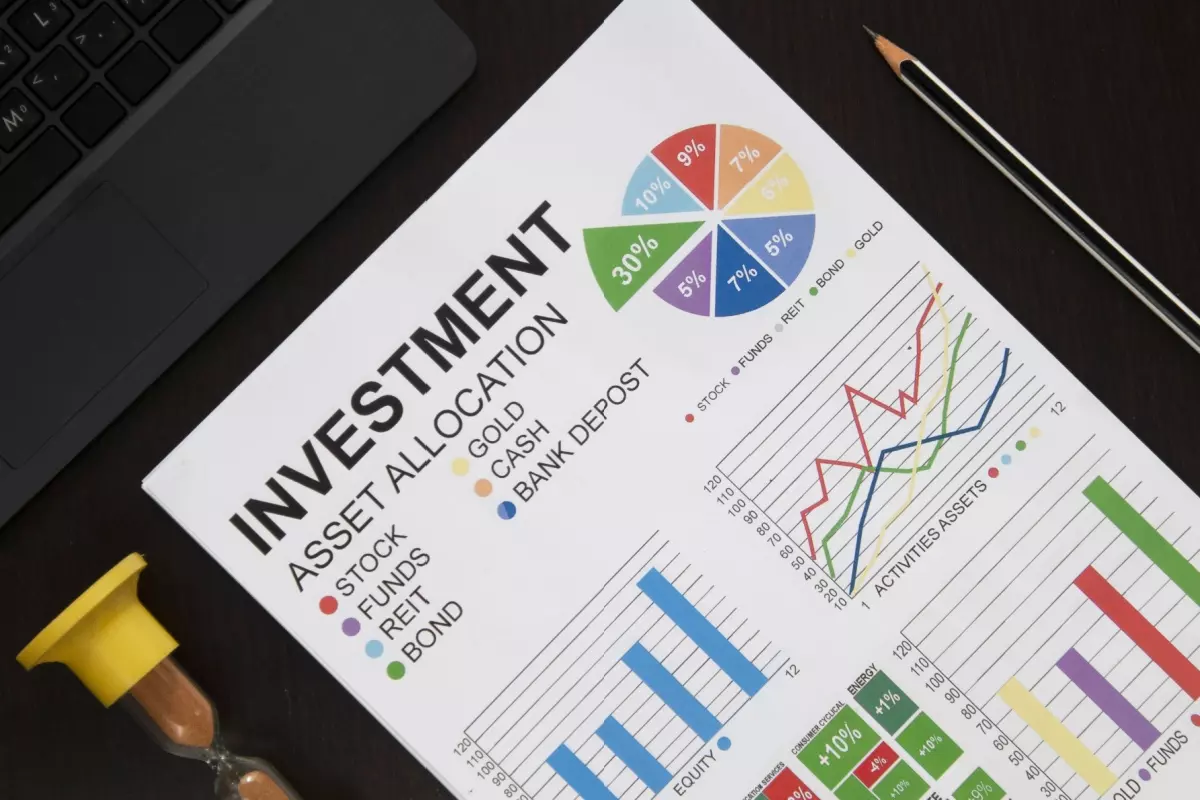Did you know that one of the most powerful tools for building your future might already be part of your financial planning? It’s not about working harder or earning more but making smarter choices with a tax-deferred retirement plan. These plans are powerful allies in your financial strategy, working behind the scenes to stretch every dollar you save.
When you contribute to a tax-deferred retirement plan, your money grows without the burden of taxes year after year. This means every dollar you would have paid in taxes continues to earn interest, allowing your savings to increase faster.
If you’re setting up your first retirement account or trying to fine-tune an existing one, the decisions you make about tax-deferred options could significantly impact your financial comfort in your golden years. Let’s take a closer look at how a tax-deferred retirement plan can maximize your retirement savings.
What Does Tax-Deferred Mean?
Tax-deferred accounts are savings plans that allow you to postpone paying taxes on the money you deposit until a later date, usually when you withdraw it during retirement. This contrasts with non-tax-deferred accounts, where you pay taxes on the money as you earn it, and any interest or gains it might generate are also taxed annually.

One of the major benefits of using tax-deferred accounts is the potential for your retirement savings to grow more quickly over time. Since you aren’t paying taxes on your deposits right away, you have a larger sum of money earning interest, which can significantly increase the growth of your investment. This compounding effect, where interest earns more interest, is more powerful when not reduced by annual taxes.
Another advantage is that many people find themselves in a lower tax bracket when they retire compared to when they are working. If this is the case, the taxes you pay on withdrawals during retirement may be lower than what you would have paid on that income during your working years. This makes tax-deferred accounts an appealing option for maximizing your savings and managing your tax burden more efficiently over the long term.
Types of Tax-Deferred Investments
When navigating the landscape of retirement savings, tax-deferred accounts offer a powerful way to secure your financial future by letting your investments grow without immediate tax implications. Here are some of the main tax-deferred account types that can help you maximize your retirement savings effectively:
Traditional IRAs
Anyone with earned income can contribute to a traditional IRA, making it a flexible option for a range of earners, from young professionals just starting their careers to those closer to retirement.
With a traditional IRA, you can choose from a wide range of assets, including stocks, bonds, mutual funds, and ETFs. This choice allows you to tailor your investments according to your risk tolerance and financial goals.
For the year 2024, the maximum contribution limit for a traditional IRA is $7,000 if you are under 50. If you are 50 or older, you can contribute up to $8,000 with additional catch-up contributions of $1,000.
Traditional IRAs require Required Minimum Distributions (RMDs) starting at age 73. This means you must begin withdrawing a minimum amount annually, which is subject to ordinary income taxes.
401(k) Plans
A 401(k) plan is a tax-deferred retirement account offered by employers. This plan is primarily accessible to employees as part of their benefits package. For 2024, the maximum contribution limit for a 401(k) is $23,000. Employees 50 and older can make an additional catch-up contribution of $7,500.

Employer matching is one of the most beneficial features of 401(k) plans. Employers may match a portion of your contributions, increasing your total savings rate without additional personal expense. For example, if your employer offers a 50% match, your employer would contribute an additional $1,500 to your 401(k) if you contributed $3,000.
Similar to traditional IRAs, 401(k) plans require minimum distributions starting at age 73. The main downside of a 401(k) plan is that you may have less choice for your individual investments, though your employer may offer a self-directed brokerage option that allows for broader choice.
403(b) Plans
A 403(b) plan is similar to a 401(k) but specifically designed for employees of public schools, certain non-profit organizations, and religious groups. The contribution limits and catch-ups are also the same as 401(k)s.
One unique aspect of 403(b) plans is the potential for additional catch-up contributions under certain conditions. Employees with 15 or more years of service with the same non-profit or educational institution may be eligible to contribute an extra $3,000 annually, up to a lifetime maximum of $15,000.
Finally, like 401(k)s, these plans have RMDs that begin at 73.
457 Plans
Lastly, a 457 plan is specifically designed for employees of state and local governments and certain non-profit organizations. It is particularly geared towards police officers, firefighters, and other civil servants, along with workers at non-profit groups that do not offer 403(b) plans.
Contribution limits and RMDs for 457 plans are the same as those for 401(k) and 403(b) plans.
One of the unique aspects of 457 plans is the lack of a 10% early withdrawal penalty for taking funds out before age 59½, which is common in other retirement accounts like 401(k)s and IRAs. This can provide significant flexibility for employees who may need access to their funds due to early retirement or other circumstances.
Benefits of a Tax-Deferred Retirement Account
Having explored the various tax-deferred retirement accounts, let’s look at how these accounts can build your retirement savings.

Here’s how they can maximize your retirement savings:
- Compound Interest: Money in tax-deferred savings plans grows unimpeded by taxes, meaning all the interest, dividends, and capital gains can be reinvested to generate their own earnings. Over time, this compounding effect can significantly increase your fund, as the growth of your investments is accelerated by the continuous reinvestment of earnings that have not been reduced by taxes.
- Tax Relief: Every dollar you invest reduces your taxable income for that year, potentially lowering your immediate tax bill. This upfront tax relief provides more funds that can be invested and grown over time.
- Lower Tax Rate at Withdrawal: Typically, individuals find themselves in a lower tax bracket during retirement compared to their working years. This lower rate means that withdrawals from the tax-deferred account will be subject to less tax. This allows you to defer taxes and also potentially reduce the total amount of taxes paid on your gains.
- Catch-Up Contributions: Tax-deferred accounts often allow catch-up contributions for individuals 50 and above. This feature is especially beneficial if you start saving for retirement later in life or if you’re looking to maximize your retirement savings during your peak earning years.
- Employer Match Programs: Employer contributions are free money added to your retirement savings, essentially doubling your nest egg.
Considerations and Limitations of Investing in Tax-deferred Accounts
While tax-deferred contributions offer significant advantages in growing your savings, it’s equally important to consider their limitations and potential drawbacks:
- Taxation on Withdrawals: Withdrawals from these accounts are taxed as ordinary income. If tax rates are higher during retirement than in your earning years, this could reduce the benefits of deferring taxes. The applicable tax rate will depend on your total taxable income in retirement, which may include other income sources.
- Early Withdrawal Penalties: Generally, withdrawing funds from tax-deferred accounts before age 59½ incurs a 10% penalty, in addition to regular income taxes on the withdrawn amount, significantly reducing the fund’s value. However, this rule has notable exceptions, such as with 457 plans, which do not have this early withdrawal penalty, and under specific circumstances like hardship withdrawals.
- RMDs: Starting at age 72, you will be required to take minimum distributions based on your account balance and life expectancy. Failing to take these RMDs can result in hefty penalties — up to 50% of the amount that should have been withdrawn. However, if you don’t need the funds for immediate expenses, reinvesting the required minimum distributions can be a strategic way to continue growing your retirement savings while complying with the IRS regulations.
- Investment Choices May Be Limited: Some tax-deferred accounts may offer a limited selection of investment options. This can restrict your ability to tailor your portfolio to your specific risk tolerance and investment goals.
- Impact on Eligibility for Other Benefits: The income from distributions might impact your eligibility for other benefits during retirement, such as Medicare premiums and Social Security taxability. Higher-income levels can lead to increased Medicare Part B and Part D premiums and could make up to 85% of your Social Security benefits taxable.
Strategies for Maximizing Benefits
To get the most out of your tax-deferred retirement accounts, consider employing the following strategies to maximize your savings:

- Maximize Employer Match: Ensure you contribute enough to your employer-sponsored plan to receive the full match. This match is effectively free money, doubling your investment instantly.
- Strategic Asset Location: For high-growth potential assets like stocks, place them in tax-deferred accounts. You can benefit from compound growth without annual tax implications. Bonds or assets generating interest or dividends should be placed in taxable accounts, where taxes on interest might be lower at withdrawal. This way, you can benefit from favorable tax treatment on qualified dividends and long-term capital gains.
- After-Tax Contributions to Retirement Accounts: Check whether you can make after-tax contributions to tax-deferred accounts that exceed the standard contribution limits. While these contributions won’t reduce your taxable income now, the earnings can grow tax-deferred, and the principal amount can be withdrawn tax-free.
- In-Service Rollovers: This option allows you to transfer funds from an employer-sponsored retirement plan like a 401(k) to an IRA while still employed. IRAs often offer more investment choices and lower administrative costs. You can tailor your investment approach to include specific assets that may not be available in your current plan.
- Roth Conversion Ladder: With a Roth IRA, you pay taxes on money going into your account, and then all future withdrawals are tax-free. The Roth conversion ladder strategy involves converting a portion of your traditional IRA to a Roth IRA each year in increments. The goal is to keep your tax-deferred account at a lower tax bracket, ensuring you are taxed at a lower rate during withdrawal. This option also diversifies your savings, giving you dual benefits of tax-deferred and Roth accounts.
- Delay Withdrawals and Invest in a Qualified Longevity Annuity Contract (QLAC): Delaying withdrawals from retirement accounts allows your investments more time to grow tax-deferred. To delay withdrawals, allocate up to $135,000 or 25% of your retirement income (whichever is less) into a QLAC.
Final Thoughts
Understanding tax-deferred retirement accounts can help you manage and grow your retirement savings. By leveraging strategies such as maximizing employer matches, strategic asset location, and utilizing options like Roth conversions and QLACs, you can optimize the growth and tax efficiency of your investments.
James Miller is a Senior Content Writer at McGruff.com. He has a background in investing and has spent most of his career in the financial industry. He can trace his family tree back to the California Gold Rush when his ancestors risked it all to make it big in the west. He feels like he's following in their footsteps as he strives to make sense of today's gold market.
